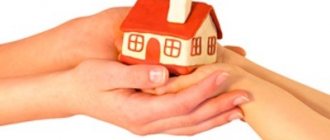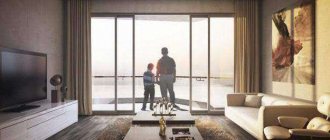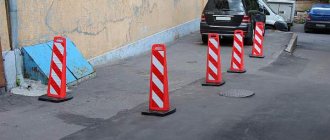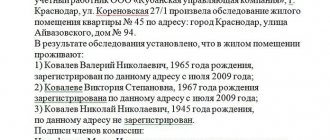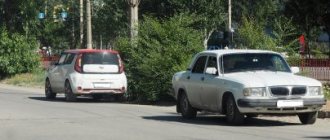Housing and communal services enterprises are obliged to provide comfortable conditions in apartments, so in winter the home should be warm. Management companies do not always ensure the prescribed temperature conditions in the premises. As a result, residents of apartment buildings not only freeze, but are also forced to overpay for services of inadequate quality.
Let's look at ways to influence the management company.
Current standards for permissible temperature in the home
Requirements for temperature conditions in housing are established in GOST R 51617-2000. This document provides differentiated indicators, taking into account the season and purpose of the premises in the apartment. permissible temperature in an apartment during the heating season is in the range from 18 to 25 degrees.
The following indicators have been established for individual parts of apartments and common areas:
Did you know
In addition to the temperature in the apartment, the legislator has determined hot water standards - they depend on the type of water supply. With an open system - in the range from 60 to 75 degrees; when closed - from 50 to 75. Read more about this in the article here
- for a living room from 18 to 24 degrees;
- for the bathroom at least 24 - 26 degrees;
- for the kitchen from 18 to 19 degrees (this is explained by the heating devices located on it);
- for children's rooms the norm is from 21 to 24 degrees (a higher temperature is optimal for infants, and closer to the lower limit for older children);
- for other rooms in the apartment the norm is within 18 – 22 degrees;
- for landings from 14 to 20 degrees;
- for the corridor between apartments from 16 to 22 degrees.
The air temperature in the apartment can deviate from the norm by no more than 3 degrees. For living rooms, discrepancies are only allowed from midnight to 5 am.
If the apartment is corner, then the minimum temperature level increases by 2 degrees, since the room has 2 walls facing the street.
SNiP 06/31/2009
Construction codes and regulations “Public buildings and structures” (approved by order of the Ministry of Regional Development of the Russian Federation dated September 1, 2009 N 390).
4. Requirements for main premises
4.1. The composition of premises and their areas are determined in accordance with the technology of functional processes of the corresponding types of public buildings and in accordance with the design standards given in these standards.
4.3. In preschool educational institutions (hereinafter referred to as preschool educational institutions), the composition and area of the main premises of a complete group cell (for general institutions), as well as small group cells, are taken according to Table 4.1.
The area of the main premises of compensatory preschool institutions, taking into account the type of disease, should be taken according to SanPiN 2.4.1.1249.
The Ministry of Regional Development of the Russian Federation dated September 1, 2009 N 390 established that Table 4.1 of these standards applies only to newly constructed buildings.
Table 4.1.
Toilet room in a complete group cell (universal for nursery and preschool groups) - 16.0 m2
Small group cell: toilet nursery for 1 child - at least 0.8 m2; preschool toilet for 1 child - at least 0.9 m2.
4.7. The area of premises for groups of short-term stays of preschoolers in residential buildings (school preparatory and walking groups) should be taken for each group: toilet - 16 m2.
The premises should also include a staff room (dressing room) with a restroom.
4.33. Sanitary facilities should be provided separately for service personnel, workers, etc., as well as for visitors, spectators, etc. To calculate sanitary fixtures, the ratio of men to women is assumed to be 1:1, unless otherwise specified in the design brief.
4.34. The design load per sanitary fixture is assigned depending on the type of public building:
- men - 1 toilet for: from 20 to 30 people. (for employees, schoolchildren), from 50 to 60 people. (for visitors); 1 urinal for: from 15 to 18 people. (for employees), from 50 to 80 people. (for visitors), 0.5 tray urinal (for 30 schoolchildren); 1 washbasin for 4 toilets (but not less than 1 per restroom);
- women - 1 toilet per: no more than 15 people. (for employees), 20 people. (for schoolgirls); from 25 to 30 people. (for visitors); 1 washbasin for 2 toilets (but not less than 1 per restroom).
Notes:
1. The specific number of devices is specified depending on the purpose of the institution.
2. The set of additional sanitary fixtures and their capacity in the buildings of preschool educational institutions, hospitals, medical and social institutions, and in physical education and sports facilities are established by the technological specification.
4.35. In women's restrooms for those working in a public building, for artists and staff of a spectator or club complex, in dormitories of educational institutions, dormitories of boarding schools, a hygienic shower, bidet or other hygienic equipment is additionally provided. It should be placed in the same stall together with the toilet.
4.36. Restroom premises in public buildings and structures (except for outdoor sports facilities) should be located at a distance not exceeding 75 m from the most remote place of permanent residence of people.
At open flat sports facilities, ski and rowing bases, etc. the distance from the training areas or the most distant place in the stands for spectators to the restrooms should not exceed 150 m.
When using buildings or open structures seasonally in non-sewered areas, special places should be allocated for installing dry closets.
4.37. Closed sanitary facilities should be provided in hospital rooms of medical and social institutions. The doors of the bathrooms can open either into the airlock at the ward or directly into the ward.
4.38. Buildings should provide rooms for storing, cleaning and drying cleaning equipment, equipped with a hot and cold water supply system and, as a rule, adjacent to restrooms. The area of these premises should be taken at the rate of 0.8 for every 100 floor area, but not less than 4.
7. Engineering equipment and ensuring sanitary and epidemiological requirements
7.4. It is allowed to illuminate with natural overhead (upper inclined) light: dressing rooms and toilet group cells.
7.6. Lighting only with a second light can be provided in toilets.
7.7. It is allowed in public buildings, in addition to SanPiN 2.2.1/2.1.1.1278, to provide without natural lighting:
- sanitary passes; latrines; locker rooms; showers; dry heat bathhouses; rooms and treatment rooms for solariums;
The list of premises, the placement of which, due to the operation of public buildings, is allowed in the basement and ground floors:
D.1. Basement floor - Entrance hall with an exit from it to the outside through the first floor; dressing rooms, restrooms, washrooms, showers; smoking; changing rooms; women's personal hygiene cabins.
Battery operating parameters and procedure for measuring their temperature
To determine compliance with the legally permissible temperature in the apartment during winter, it is necessary to check the operation of the batteries. They should be periodically monitored to establish the validity of housing and communal services tariffs.
Standards for water pressure (pressure) in an apartment are defined within the following limits:
- for cold water - from 0.3 to 6 atmospheres;
- for hot – from 0.3 to 4.5 atmospheres.
Read more on our website here.
There are no standards regulating the minimum temperature of radiators. In this case, the maximum limit for heating batteries is set, defined in SNiP 41-01-2003.
- If the heating system is two-pipe, then the radiator should not heat up above 95 degrees.
- When the system is single pipe, the limit is 115 degrees.
The recommended range is also set - from 85 to 90 degrees.
To establish deviations from the permissible temperature norm and achieve recalculation, it is necessary to measure the temperature of the radiators using one of the following methods:
- by applying a standard electronic thermometer to the surface of the battery (in this case it is necessary to add no more than 2 degrees to the readings);
- using a heat meter that senses infrared radiation;
- using an alcohol-type thermometer (it must be isolated from the environment when taking measurements).
Any of the devices used must have a certificate and passport, which contains the rules of use and error characteristics.
Working hours in hot weather according to the Labor Code
We indicated above what the normal room temperature is. Is this the answer to the question at what temperature can you work in a room? Yes, but with certain reservations. Of course, the temperature for the workroom is not specified in the Labor Code. However, it is noted that the employer is obliged to ensure safety and working conditions that comply with state regulatory requirements for labor protection (Part 2 of Article 22 of the Labor Code of the Russian Federation). And the standards established by SanPiN 2.2.4.3359-16 are one of the mandatory rules.
Appendix 3 to SanPiN 2.2.4.3359-16 indicates the duration of work when the air temperature in the workplace is above or below permissible values. This is what the employer should focus on. For example, at a workplace temperature of 28 °C, the time spent in the office cannot exceed 8 hours. What if the room temperature is above 28 degrees? At a temperature of, say, 30 °C, the time spent in the office cannot be more than 5 hours. Therefore, based on temperature measurements (for example, according to a room temperature sensor), as well as a protocol drawn up by the commission, the employer is obliged to reduce the working day.
Read more: Making entries about awards in the work book
Measuring the temperature in the apartment
Violations can be detected by recording the temperature in the apartment. Measurements should be carried out observing a number of rules:
- It is necessary to record the temperature on a cloudy day so that the sun does not heat the air;
- if doors, windows or walls are not airtight, then it is necessary to limit the air flow;
- measurements are carried out in 2 rooms (except for apartments with a single living space);
- the temperature is fixed at a distance of at least half a meter from the outer wall and heating devices and not lower than 60 cm from the floor;
- as when establishing compliance with the permissible temperature of a battery in an apartment, you should use a certified device that has a passport.
When deviations are recorded, it is worth filing a claim with the management company. About where to write a complaint about housing and communal services - read this article https://potrebexpert.online/5639-sostavlyaem-zhalobu-na-zhkh-upravlyayushhuyu-kompaniyu-komu-zhalovatsya-kak
Watch the video about temperature standards:
What to do and where to go if the average temperature in the apartment is far from the sanitary norm
The lack of heat in the apartment indicates the provision of utility services of inadequate quality and is a reason to contact the emergency dispatch service so that a commission can come and measure the indicators. Employees accept both written applications and telephone calls from citizens. The operator on duty registers the complaint and schedules an inspection time.
The commission must arrive a maximum of 2 hours after receiving a complaint from the consumer. The exact time of the inspection will be agreed upon with the apartment owners.
After recording the indicators with a registered device that has all the necessary technical documents, an inspection report is drawn up. If violations are detected, the act states how many degrees there are in the room, the date and time, the characteristics of the apartment, and the composition of the commission. The document is signed by all members of the commission.
Advice! If you decide to take care of the thermal insulation of your home yourself, then do not forget about supply and exhaust ventilation. Lack of air exchange causes unpleasant odors and condensation on the windows.
Temperature in the office
Maintaining normal temperature is an important condition for the normal functioning of the company. Not only the health of workers, but also their labor productivity, as well as the normal functioning of the entire enterprise, depends on the temperature in the office.
Temperature standards are regulated by SanPin 2.2.4 548 96. The fifth and sixth sections of the Rules are devoted to optimization and temperature limits depending on the season (warm or cold).
Office workers whose work can be classified as intellectual, characterized by a low level of physical activity, as well as a sedentary position, are included in category Ia by the Labor Code and SanPin. For this category of employees, a temperature of twenty-three to twenty-five degrees (in summer) and twenty-two to twenty-four degrees (in winter) must be provided.
If the room temperature does not meet the specified standards, employees have the right to demand that the employer reduce the duration of work shifts.
If the temperature exceeds plus twenty-nine, labor time is reduced to three to six hours (in accordance with the functions performed). If the temperature in the office exceeds thirty-two degrees, working for more than one hour is prohibited.
There are indicators for the cold season. At temperatures below nineteen degrees, the shift duration is reduced by an hour. At temperatures below thirteen degrees Celsius, the working day cannot exceed one hour.
Read more: Sample application for citizenship for a child
The work of an organization whose management constantly violates the temperature conditions of the premises can be temporarily stopped for a period of up to three months.

